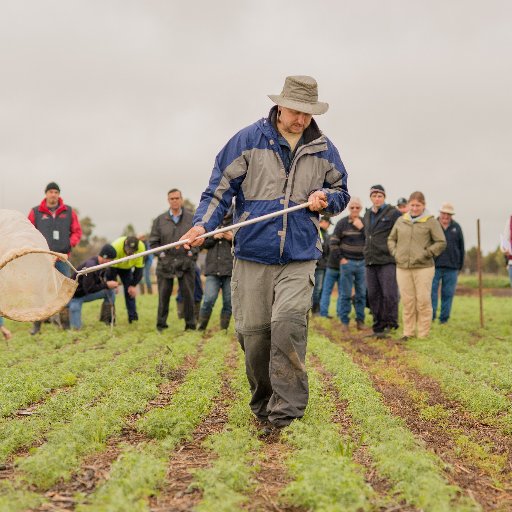A Continuously Spinning Orb of Farms
- Dr. Jonathan Lundgren

- Jan 22, 2022
- 3 min read

Dr. Jonathan Lundgren, Director
Ecdysis Foundation
I have been debating in my mind and heart what a farm is for quite a while.
Many of the farms that we are helping to convert to regenerative systems are large. Indeed, the average farm size in the US is by far the largest it has ever been. The bubble of these swelling farms is operated by a dwindling number of aging farmers. These are the land managers that direct the course of the planet.
Meanwhile, an argument can be made that the purest of regenerative farms are often smaller. They have learned to farm small and creatively, stacking enterprises and integrating multiple revenue streams to make a living.
Blue Dasher Farm is small- 53 acres of mostly prairie and wetlands. We produce honey and lamb. Poultry, pork, eggs and seed for our community. But Blue Dasher’s most important product is the next generation of agricultural scientists. A training ground where scientists can get their hands dirty, producing food so that they can be better leaders.
I recently have been exposed to the homesteader movement. These are often small scale (sometimes, little more than a back yard) farms that produce an array of products, but are often most emboldened by producing the food and materials needed by their families in creative, community-based ways. Many of these farmers are women. They knit together families and friends (sometimes from over vast distances) to form a growing rural fabric that has been forgotten for too many decades, replaced with technology and complacency. And the appreciation and promotion and connection with diverse life on their farms is inherent in their lifestyle. They are in balance and in symbiosis on so many levels that are fundamentally human.
The knot is that larger land managers so important to our survival look at Blue Dasher Farm and at homesteaders, categorize these as “hobby farms” that are difficult to relate to. And vice versa. So, what is a farm?
The Gaia Hypothesis says that the geochemical conditions on Earth are self-regulated by the life living on it. That life on our planet has a tremendous influence on things like climate and the chemical make-up of the atmosphere. Taken in aggregate, life on the planet forms a symbiotic superorganism that essentially produces and regulates its own environment. And when homeostasis (or balance) of the environment alters substantially, this life evolves accordingly to make sure that life can continue on the planet.
It is beautiful. And empowering. It is hopeful that through respect and working alongside life in its many forms, that humans can change the planet.
I think if I am to get back to fundamentals, Gaia Hypothesis transfers to a farm really well.
At its core, a farm is an assemblage of symbioses among organisms that self-regulate into a habitat whose productivity is limited by its abiotic resources. But this life is also the tool for enhancing these abiotic resources.
I know, I am a geeky scientist…bear with me
To me, a farm is a balance of life, integrated by humans. The product of a farm is food and fiber, but it is only a farm if it also produces homeostasis. Homeostasis, as maintained by life, is the most important products of a farm.
It was this loss of homeostasis that is the downfall of an industrialized food system. For 90 years, we have been replacing the balance of life on a farm with technology as society changed and the next generations left the farm. The big got bigger. And bigger. The balance of life wasn’t disrupted. It was vaporized, leaving a desert. And the results are being felt in every facet of society and ecology.
Can a regenerative farm be scaled to hundreds or thousands of acres? Absolutely it can. 100%.
But it will require a philosophy and business plan that maintains the homeostasis of life on a farm. And when farmers achieve this through plants and animals, they find that they just don’t need to farm as large as they used to. Small and large farms all have an awful lot to learn from each other.
Innovation comes from the fringe. And farming and the planet desperately need innovation right now.
When charged with forecasting the future of food production, look to the small regenerative farms that are getting started right now. How they are creating their business model and communities in new and creative ways. Many of these farms are going to scale up.
We won’t be able to test Gaia Hypothesis on a planetary scale for a long time. It will require interstellar travel to see whether life similarly self-regulates the climate and chemistry of other planets. But I have seen it and felt it on regenerative farms. And in the end, a healthy planet (with humans on it) can only be achieved with regenerative farming systems.





Comments